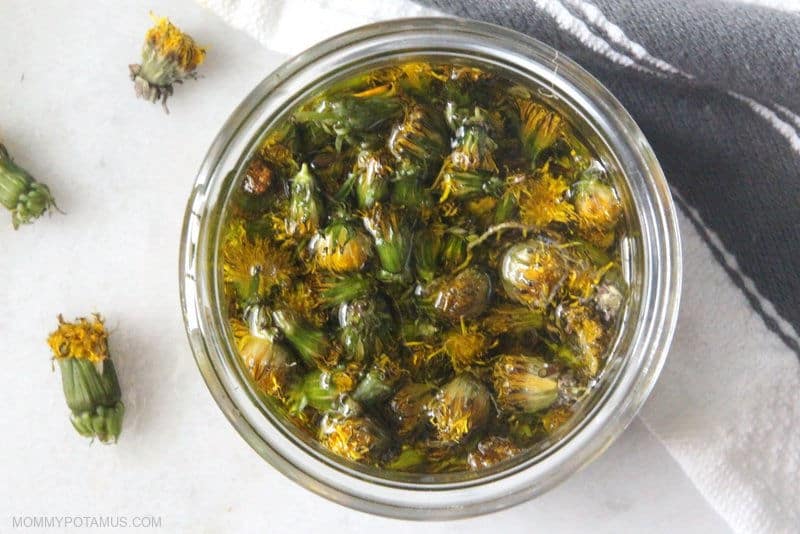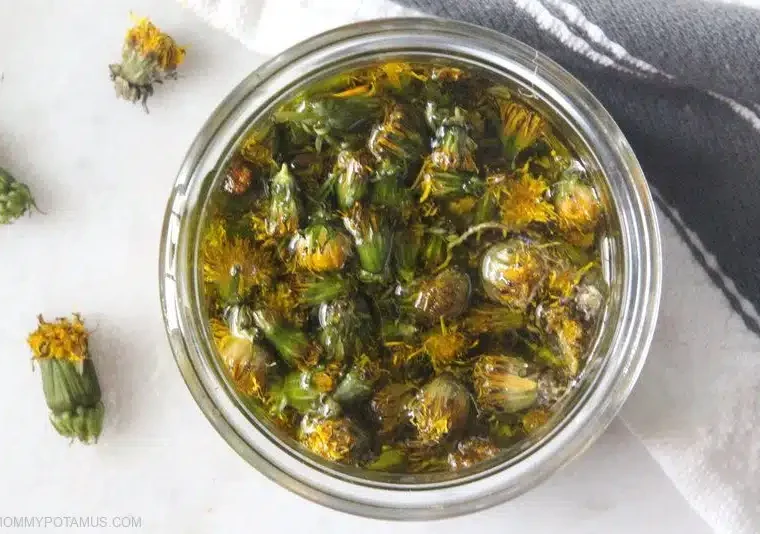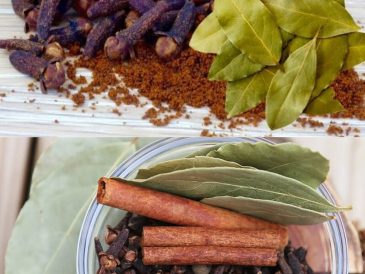
How to Make Dandelion Infused Oil: Harnessing Springtime’s Healing Herb
by Linda Parker
March 31, 2024 – Updated on August 14, 2025

Every spring, bright yellow dandelions blanket fields, gardens, and lawns.
While many people see them as weeds, herbalists and natural healers know better: dandelions (Taraxacum officinale) are powerful medicinal plants with centuries of use in traditional medicine.
One of the most effective – and easiest – ways to capture their healing benefits is by making dandelion infused oil.
This golden oil harnesses the plant’s natural compounds to soothe sore muscles, ease joint pain, moisturize skin, and even fight inflammation.
The Healing Power of Dandelions
Dandelions have been used in traditional Chinese medicine, Ayurveda, and European folk remedies for centuries.
Every part of the plant – roots, leaves, and flowers – contains medicinal value.
- Flowers: Rich in antioxidants, flavonoids, and carotenoids. They are especially soothing for skin and inflammation.
- Leaves: High in vitamins A, C, and K, as well as iron, magnesium, and potassium. Often used in teas and salads.
- Roots: Known for detoxifying properties and liver support.
Why Use the Flowers for Infused Oil?
The bright yellow petals are packed with antioxidants, polyphenols, and anti-inflammatory compounds.
When infused into oil, these nutrients create a topical remedy for:
- Muscle and joint pain.
- Skin irritation and dryness.
- Minor wounds and chapped lips.
- Relaxation and stress relief through gentle massage.
Harvesting Dandelions: Best Practices
To make the best infused oil, you’ll want to harvest responsibly:
- Timing: Collect dandelion flowers in mid to late morning, after the dew has dried but before the afternoon sun wilts them.
- Location: Choose dandelions from clean areas, away from roadsides, sprayed lawns, or polluted areas.
- Quantity: For a small batch, gather about 2–3 cups of fresh flowers.
Tip: Pick only the fully open, bright yellow flowers. Avoid buds or fading blooms.
Preparing Dandelions for Infusion
Fresh dandelion flowers contain a lot of water, which can cause mold in your oil if not handled properly.
Here’s how to prepare them:
- Rinse Lightly (Optional): If the flowers are dusty, give them a quick rinse. Shake off excess water.
- Drying: Spread flowers on a towel or screen in a warm, airy space. Let them dry for 24–48 hours to remove surface moisture.
- Optional Dehydration: Use a dehydrator on low heat for 1–2 hours to speed up drying.
This step is crucial – never infuse completely wet flowers, as it leads to spoiled oil.
Choosing the Right Carrier Oil
The base oil you choose will determine the shelf life and benefits of your dandelion oil.
Here are the best options:
- Olive Oil: A classic choice; deeply moisturizing and long-lasting.
- Sweet Almond Oil: Light, non-greasy, perfect for massage and skincare.
- Jojoba Oil: Closest to skin’s natural sebum, excellent for facial oil.
- Coconut Oil: Solid at room temperature; great for balms and salves.
- Sunflower Oil: Affordable and packed with vitamin E.
How to Make Dandelion Infused Oil
There are two primary methods: solar infusion and warm infusion.
Method 1: Solar Infusion (Traditional)
- Fill a clean, dry glass jar halfway with dried dandelion flowers.
- Cover with your chosen carrier oil until flowers are completely submerged.
- Stir to remove air bubbles and seal with a lid.
- Place the jar in a sunny windowsill for 2–3 weeks. Shake gently every few days.
- Strain through cheesecloth into a dark glass bottle.
Method 2: Warm Infusion (Quick)
- Place dried dandelion flowers in a heat-safe jar.
- Cover with carrier oil.
- Place jar in a slow cooker or double boiler on low heat (100–120°F / 38–50°C) for 4–6 hours.
- Stir occasionally, making sure not to overheat.
- Strain and store in dark glass bottles.
Benefits of Dandelion Infused Oil
1. Relieves Muscle & Joint Pain
Dandelion oil has natural anti-inflammatory properties, making it ideal for massaging into sore muscles, arthritic joints, and back pain.
2. Moisturizes Dry Skin
Rich in essential fatty acids and antioxidants, it hydrates dry, flaky skin and helps restore natural softness.
3. Soothes Irritated Skin
From minor rashes to bug bites, dandelion oil reduces redness and irritation.
4. Supports Wound Healing
The antibacterial properties can help with minor cuts, scrapes, and cracked skin.
5. Eases Stress with Massage
Used as a massage oil, its subtle earthy aroma helps reduce tension and promote relaxation.
6. Great for Hair and Scalp
Massaging dandelion oil into the scalp nourishes hair follicles, reduces dandruff, and improves shine.
7. Anti-Aging Benefits
The antioxidants in dandelion oil fight free radicals that cause premature aging, helping keep skin youthful.
How to Use Dandelion Oil
- Massage Oil: Warm a few drops and rub onto sore muscles.
- Facial Oil: Use 2–3 drops nightly for glowing skin.
- Body Lotion Booster: Mix into your favorite unscented lotion.
- Salves & Balms: Combine with beeswax and shea butter for homemade healing salves.
- Bath Oil: Add a tablespoon to warm bathwater for relaxation.
- Hair Treatment: Massage into scalp before shampooing for extra nourishment.
How to Turn Dandelion Oil Into Healing Salve
For a more concentrated remedy:
- Warm 1 cup of dandelion oil.
- Add 1 oz of beeswax pellets and stir until melted.
- Pour into tins or jars and let cool.
This creates a solid balm that’s portable and long-lasting.
Storage and Shelf Life
- Store in a dark glass bottle to protect from sunlight.
- Keep in a cool, dry place.
- Shelf life: 6–12 months (depending on oil used).
- Add a few drops of vitamin E oil to extend freshness.
Precautions & Safety Tips
- Allergies: If you’re allergic to ragweed, marigolds, or daisies, test a small patch first.
- Pregnancy: Consult with a healthcare provider before use.
- Pets: Dandelion oil is generally safe but should not be ingested by cats or dogs.
Making dandelion infused oil is a simple, rewarding way to turn a common “weed” into a powerful herbal remedy.
With just a handful of flowers and a good carrier oil, you can create a natural product that supports skin health, eases pain, and nourishes your body.





